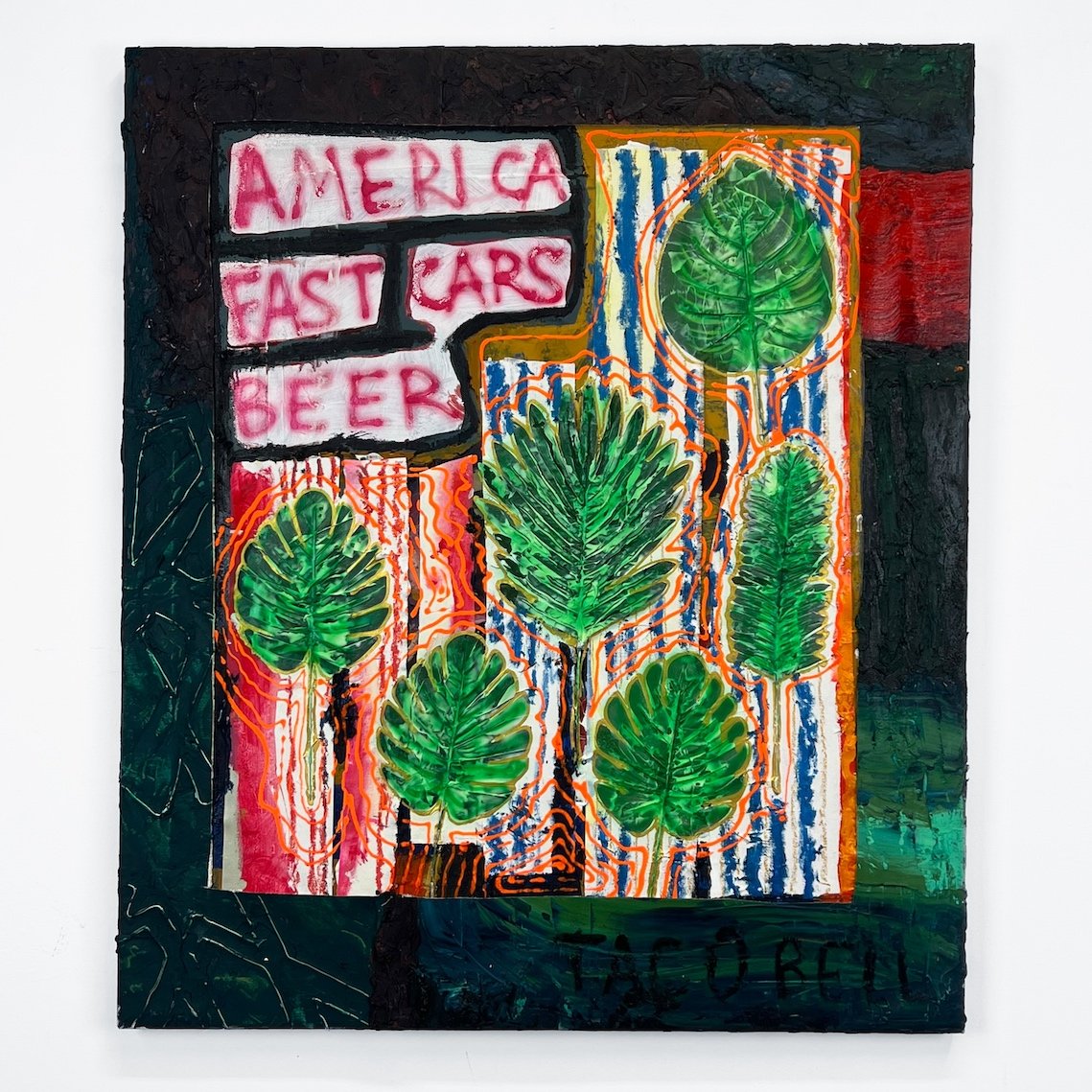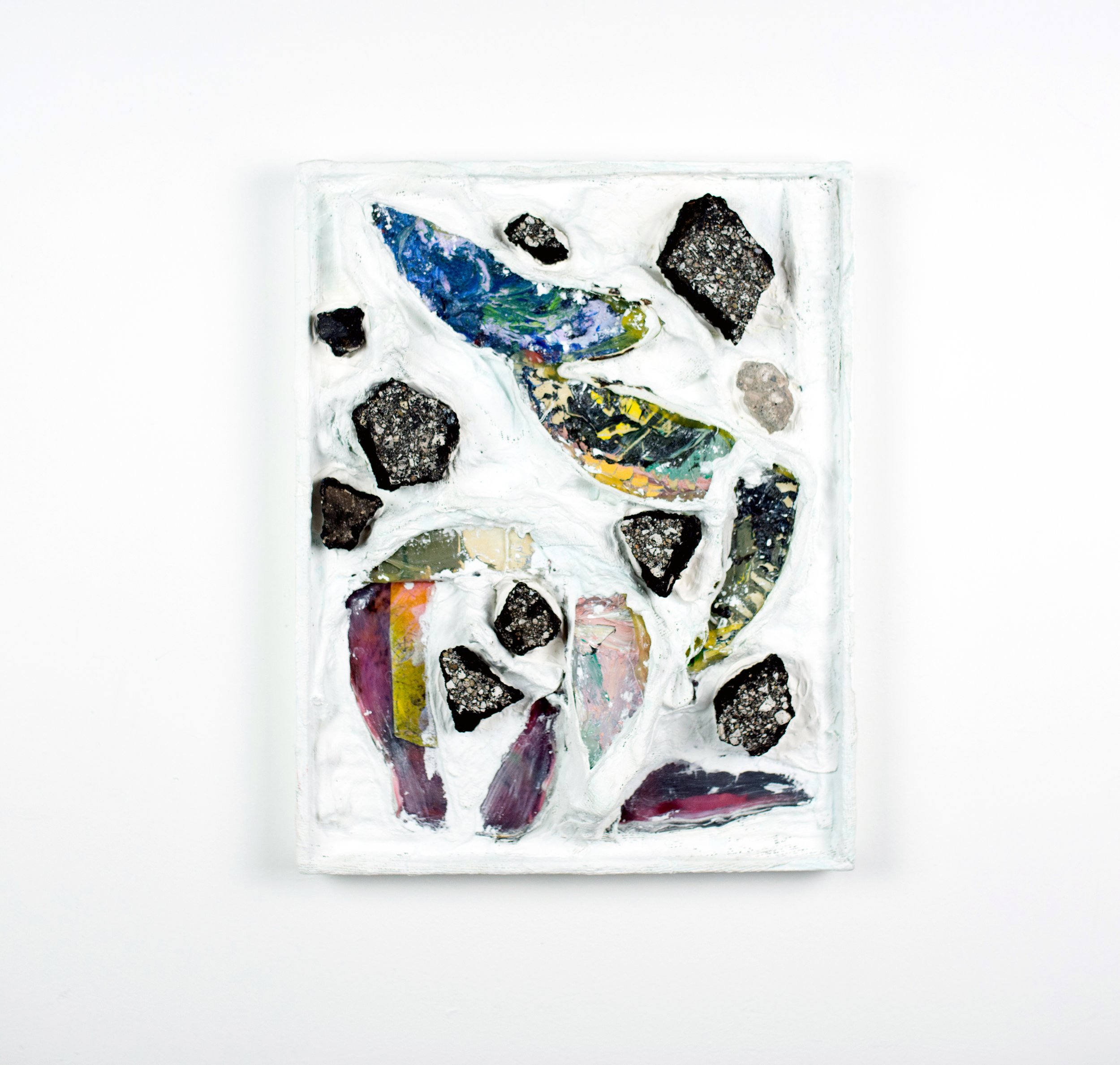And | Now | This
“And now,” says a newscaster somewhere in the world at this very moment, “this news from…” Suddenly we, the viewers, are rushed into the next story, distraction, or tragedy. Artist Willard Johnson finds this experience alarming. His newest exhibit And | Now | This, is a collection of paintings and mixed media that provides a commentary on the often chaotic way we receive information in the digital age. Johnson’s canvases overwhelm with color, texture, and energy – mirroring our media-saturated lives.
Johnson is not so different from his artwork: a myriad of juxtaposing people, places, and things. The son of two missionaries, Johnson has called many places home: Egypt, Korea, Lebanon, Germany, and Japan, to name a few. His work reflects these shifts in geography. Entering the gallery, Johnson confronts you with a massive tapestry suspended from the ceiling. A variety of paint and materials were stitched together like a quilt to create this piece. Immediately, it is evident that And | Now | This is an exhibition that, like the tapestry itself, is intentionally layered with contrasting stories and histories.
Walking Home
oil, acrylic, rigid wrap, canvas on extruded polystyrene panel
Walking Home is a painting of figures walking in what appears to be an urban setting. Like other depictions of figures in this exhibit, Johnson scoured Google Earth images to find these anonymous individuals. This approach to painting is specifically digital and locates Johnson’s art practice squarely in the 21st century. Such a process would not have been possible, let alone thinkable, just a century ago; a testament to the vast world of images and information at our fingertips in the modern era.
We All Heard the Toilet Flush
acrylic, flashe, caulk, rigid wrap, canvas on extruded polystyrene panel
Similar to a morning news hour, And | Now | This explores a variety of heavy and lighthearted topics. We All Heard the Toilet Flush is a painting of a zoom call, with a grid of abstracted people rendered in various tones of color. The style suggest a modernist influence, perhaps reminiscent of an artist like Picasso. Johnson’s knowledge shines in a piece like this– where a particularly contemporary experience, i.e., a zoom call, is shown in a way that feels connected to art history.
Remain at Large
oil, acrylic, canvas, tarp, oil tube, oil stick, caulk, rigid wrap, spray paint, solar powered security camera mounted on panel
Johnson finds other moments to interject humor into the show. Remain at Large was created after asking, “what if a painting was staring back at you?” Having worked in many fine art gallery settings, Johnson’s configuration of this piece becomes a commentary on the art world: a world in which valuable artworks are guarded in high-security museums and constantly watched by intelligent cameras.
America Fast Cars Beer
oil, acrylic, spray paint, airbrush, faux leaves, on collaged and cut canvas mounted on the reverse with rigid wrap
In the piece America Fast Cars Beer, Johnson adopts the language of American patriotism, smearing the title onto the canvas. Like other pieces in And | Now | This, various murky shades of green are used. On the outskirts of the canvas, ghostly text can be faintly seen, as the words ”Taco Bell” appear in the corner. The result is a piece that feels both playful and uncanny.
Ultimate Potential
oil, acrylic, paper plates, wire, epoxy resin, wire, asphalt, rigid wrap, caulk, wood frame on panel
Johnson covers his canvases with materials like caulk and, in the piece Ultimate Potential, chunks of asphalt. It is impossible to escape the heaviness of the canvases in this show. They are three-dimensional; made jagged by their encrusted surfaces. Throughout this exhibit, there’s a roughness to Johnson’s approach — an intentional messiness that gives each piece a tactile quality.
City Portal to Kindness
digital collage on paper, acrylic, pastel, photographs, epoxy resin, caulk, airbrush, on panel
And | Now | This is humorous, unsettling, mesmerizing, and poignant. Johnson’s art is informed by the way we intake high-speed mainstream media, yet the effect of his work is the opposite. And | Now | This is an invitation to slow down and meditate on our disjointed perception of the world. What is reality? What is illusion? Willard Johnson leaves us with many questions and a strange feeling in our stomach—something akin to motion sickness—as we are catapulted from image to image and story to story.







